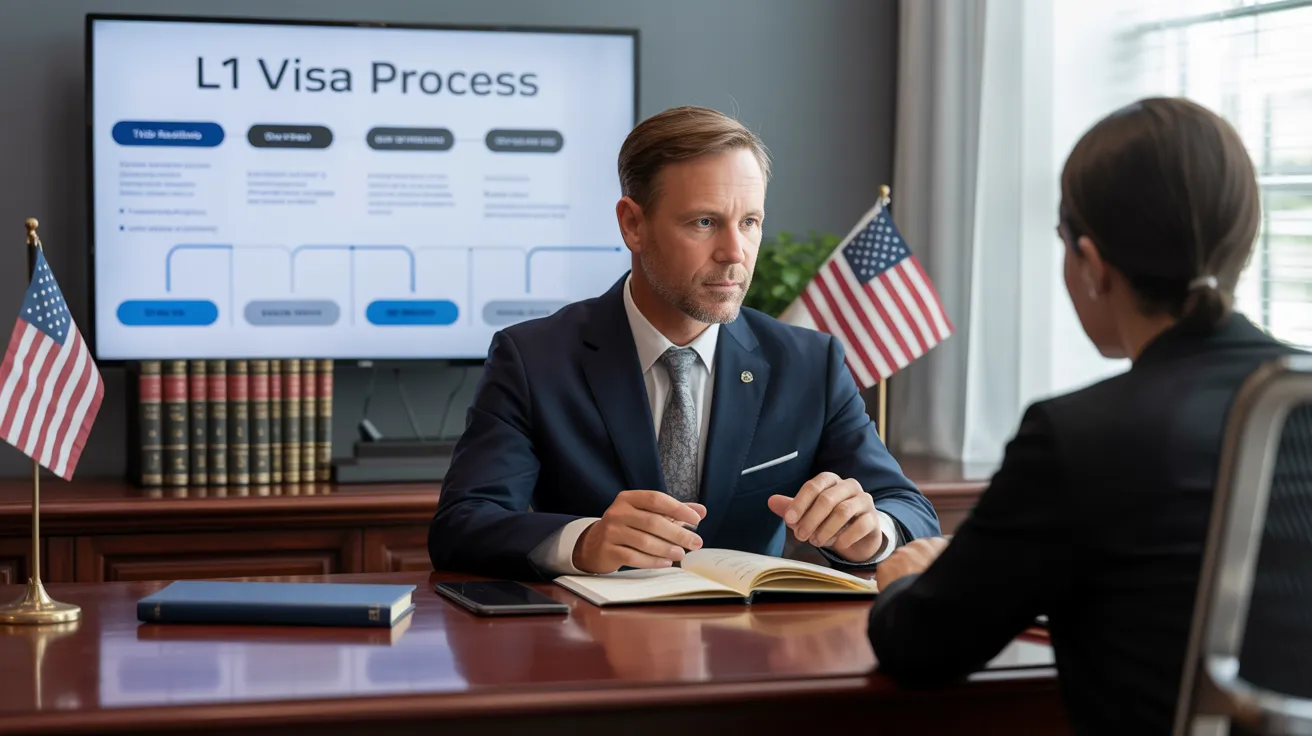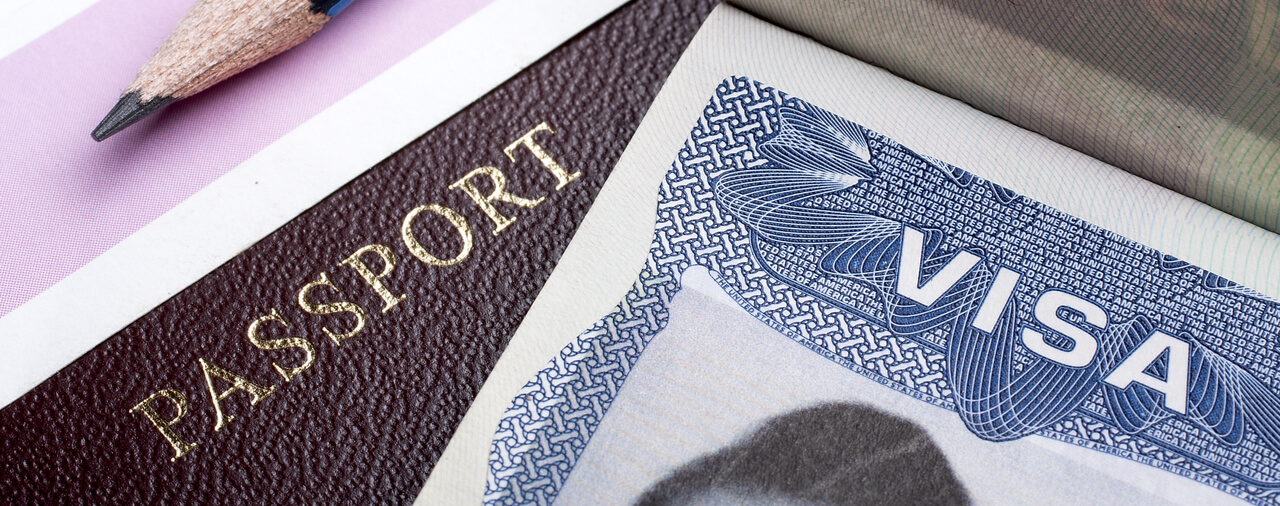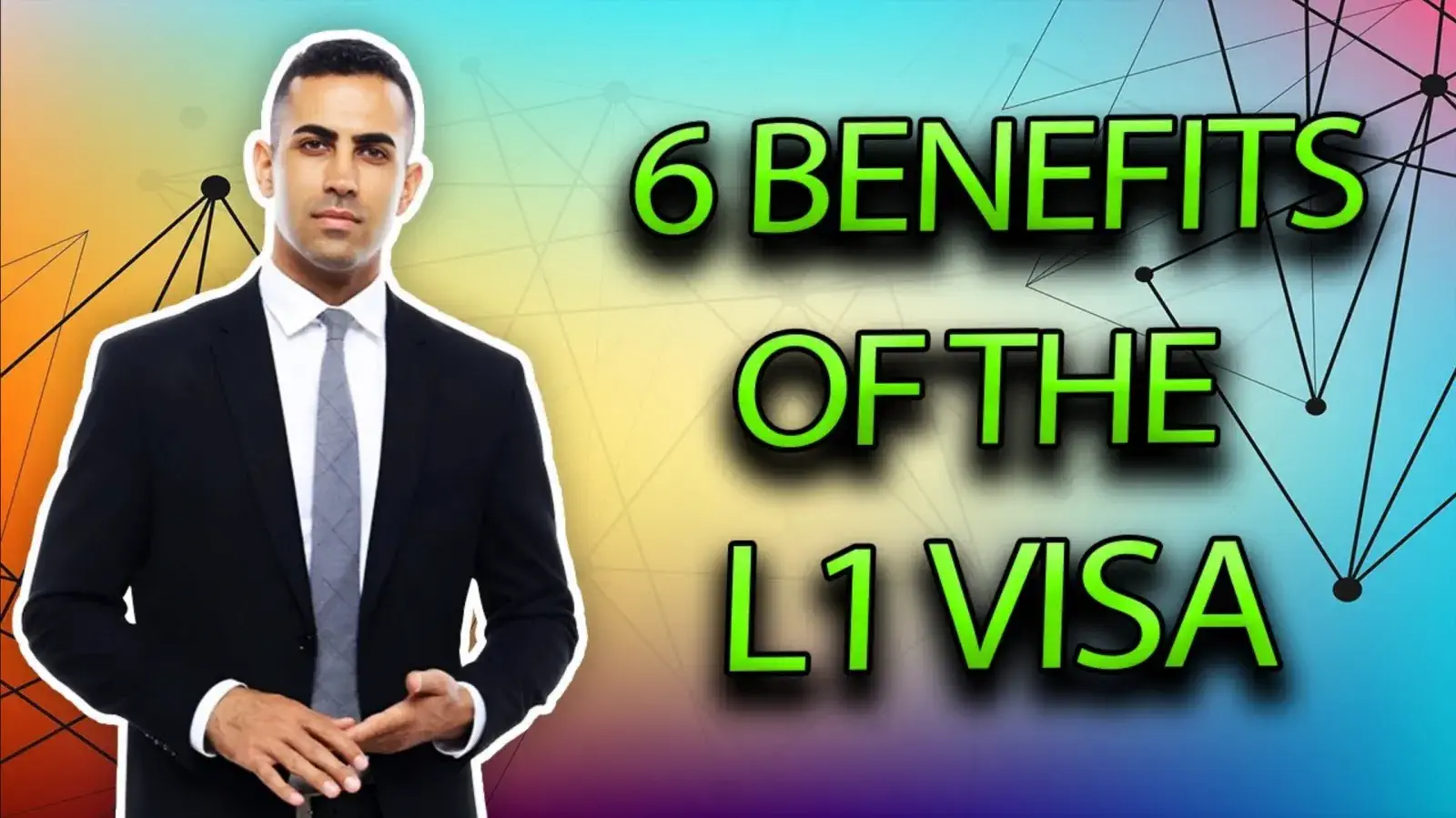Unlocking Opportunities: A Comprehensive Guide to the L1 Visa Process
The L1 visa process presents a vital path for multinational firms looking for to move vital workers throughout boundaries. Understanding the subtleties of qualification standards, the differences in between L-1A and L-1B visas, and the intricacies of the application process can substantially affect an applicant's success. Navigating this complex landscape is not without its difficulties, and mindful focus to documents and company sponsorship is vital. As we explore the essential parts of this process, the methods for overcoming possible challenges will become noticeable, revealing how informed preparation can open up a world of possibilities.
Recognizing the L1 Visa
Understanding the L1 visa requires identifying its value as a crucial device for international firms seeking to move experienced workers between global workplaces. This non-immigrant visa category facilitates the movement of executives, managers, and specialized expertise workers to the United States, thus enabling companies to preserve functional connection and harness global talent successfully. The L1 visa is divided right into two key classifications: L-1A for managers and executives, and L-1B for staff members possessing specialized knowledge.The L1 visa serves a crucial function in improving a firm's one-upmanship in the international industry - L1 Visa. By allowing business to transfer their vital personnel, businesses can ensure that critical tasks are taken care of by certified people that are currently knowledgeable about the firm's culture and functional processes. This internal transfer mechanism not just promotes understanding sharing but additionally promotes innovation and collaboration throughout borders.Moreover, the L1 visa is usually preferred for its fairly uncomplicated application process contrasted to other visa classifications, as it enables twin intent, permitting owners to pursue permanent residency while on a short-lived copyright. This attribute makes the L1 visa specifically appealing for both employers and employees, as it simplifies the pathway for skilled experts to establish long-lasting residency in the United States
Eligibility Criteria
Eligibility for the L1 visa depends upon numerous crucial standards that ensure both the staff member and the company fulfill particular qualifications. This non-immigrant visa is created for multinational firms to move employees from consular services to U.S. counterparts.Firstly, the company needs to be a qualifying organization, that includes a moms and dad firm, branch, affiliate, or subsidiary of a united state company. The business has to have been doing business for at the very least one year both in the U.S. and abroad. This guarantees that the company has sufficient operational stability and a genuine presence.Secondly, the employee must hold a managerial, executive, or specialized understanding position. For L1A visas, the applicant needs to demonstrate managerial or executive certifications, while L1B visas concentrate on specialized expertise pertaining to the organization's items, solutions, or procedures. In addition, the worker needs to have helped the international entity for a minimum of one constant year within the last 3 years prior to their application.Lastly, the worker's function in the united state need to line up with their previous setting, ensuring that their abilities and experience are leveraged for the business's benefit.
Sorts Of L1 Visas
The L1 visa classification consists of 2 primary types designed to facilitate the transfer of staff members within international business: the L1A visa for managers and execs, and the L1B visa for employees with specialized knowledge. Each type offers distinct functions and has details qualification criteria.The L1A visa is customized for individuals that hold supervisory or executive settings within a firm. This visa makes it possible for high-level staff members to move to a united state branch, subsidiary, or affiliate of the same organization. Candidates for the L1A visa should demonstrate that they have been utilized in a supervisory or executive capability for at least one continual year within the previous three years before their application. Additionally, this visa supplies a much longer duration of remain, at first given for 3 years, with the opportunity of expansions for as much as seven years.In comparison, the L1B visa is intended for professionals with specialized expertise pertaining to the firm's products, solutions, or procedures. To certify, applicants must verify that their competence is important to the company which they have actually benefited a minimum of one continual year within the last 3 years in a duty that required this specialized knowledge. The L1B visa is originally provided for 3 years, with extensions offered for up to five years.Both visa types are essential for companies looking for to improve their worldwide operations by leveraging skilled personnel, thus promoting innovation and efficiency within the U.S. market.
Application Process
Steering via the L1 copyright procedure entails numerous crucial actions that need to be thoroughly complied with to assure an effective result. The process begins with the U.S. employer, that should initially develop eligibility by demonstrating a certifying connection with the international entity and confirming that the employee satisfies the details needs for the L1 visa classification being sought.Once eligibility is confirmed, the company initiates the process by submitting Form I-129, the Application for a Nonimmigrant Employee, with the U.S. Citizenship and Migration Solutions (USCIS) This type must be gone along with by a comprehensive summary of the task obligations to be carried out, the organizational framework of both the united state and foreign entities, and the staff member's credentials. It's crucial to validate that all information is exact and full, as omissions or errors can result in delays or denials.Upon authorization of the I-129 petition, the following step includes the staff member applying for the L1 visa at a united state embassy or consular office in their home nation. This phase needs the completion of Type DS-160, the Online Nonimmigrant copyright, and scheduling an interview. Throughout the interview, the candidate has to provide evidence sustaining their certifications and the company's petition.After the visa is given, the worker can get in the United States to operate in the marked duty. Generally, mindful prep work and adherence to each step of the application procedure are vital for an effective L1 visa end result.
Called for Documents

Essential Forms Needed
Maneuvering the L1 Visa process needs careful interest to the essential kinds and documents required for an effective application. The main form needed is the Kind I-129, Request for a Nonimmigrant Worker, which need to be finished and sent by the united state employer. This form lays out the details of the work offer and the qualifications of the staff member seeking the L1 Visa.Alongside Form I-129, the applicant will certainly need to total Kind I-539 if going along with member of the family are also looking for visas. Additionally, the employer has to offer proof of the certifying partnership between the united state entity and the international entity, usually demanding the entry of corporate papers such as write-ups of incorporation or monetary statements.Moreover, it is important to include the L Category Supplement to Kind I-129, which defines the type of L Visa being requested-- either L-1A for managers and executives or L-1B for workers with specialized expertise. Finally, candidates should ensure that all kinds are signed and dated appropriately, as insufficient submissions can result in delays or rejections. Appropriately assembling these important forms lays the foundation for a smoother L1 copyright procedure.

Sustaining Evidence Requirements
Supporting documentation is essential for an effective L1 copyright, as it confirms the cases made in the application. Candidates should offer a series of files to show eligibility for the visa, which is classified into 2 main types: proof of the certifying partnership between the united state and international entities and evidence of the candidate's qualifications.To develop the relationship, applicants ought to send documents such as business organizational charts, economic statements, and evidence of ownership. These files validate that the foreign company has a certifying connection with the U.S. company, whether as a moms and dad business, subsidiary, branch, or affiliate.For the applicant's certifications, vital documents consist of a thorough employment letter from the international company, describing the candidate's job title, obligations, and duration of work. Additionally, academic credentials, such as degrees and diplomas, need to be offered to prove the applicant's experience in the pertinent area.
Company Sponsorship Files

Common Obstacles
Maneuvering the L1 visa procedure presents several common challenges that applicants need to recognize. Trick concerns often consist L1 Visa of stringent documents demands, possible delays in handling times, and the need for strict lawful compliance. Recognizing these obstacles can aid candidates much better prepare and minimize dangers throughout their copyright trip.
Paperwork Needs
The L1 copyright procedure typically presents considerable difficulties related to documents requirements. Candidates have to supply considerable documentation to establish qualification, which can result in confusion and prospective delays. Trick records include proof of a certifying partnership between the U.S. and foreign company, proof of the candidate's employment background, and detailed info concerning the job role in the U.S.One usual obstacle is collecting enough proof to demonstrate the nature of the qualifying relationship. Companies typically have a hard time to present clear business graphes or economic statements that highlight the link in between the entities. Furthermore, guaranteeing that letters of support from employers precisely show the applicant's job obligations and certifications is important, as vague descriptions can result in denials.Another issue develops from the need for thorough task descriptions that align with the L1 visa categories. Candidates have to articulate not just their present role but additionally their managerial or specialized expertise duties plainly. This requires an extensive understanding of both the candidate's setting and the regulatory language used in L1 applications.
Processing Dead Time
Experiencing hold-ups in handling times is a common challenge encountered by L1 visa candidates, commonly leading to disappointment and unpredictability. Several variables contribute to these hold-ups, including high application quantities, boosted scrutiny of applications, and management backlogs within the united state Citizenship and Migration Services (USCIS) Candidates may locate that processing times can differ considerably relying on the service facility handling their application, as each facility has its very own work and effectiveness degrees. Additionally, the complexity of the candidate's case, such as the requirement for comprehensive documentation or information, can further expand wait times.In some instances, problems associated to the applicant's existing migration status or previous visa history may additionally result in extra hold-ups, as USCIS might call for additional testimonial or details. It is important for prospects to continue to be positive during this period, preserving open interaction with their employers and lawful representatives to attend to any kind of prospective concerns promptly.Understanding these processing time difficulties can help L1 visa candidates plan for feasible hold-ups and alleviate the effect on their shift and career plans. Persistence and diligence are necessary merits in steering this detailed procedure.
Legal Conformity Issues
Many L1 visa candidates come across lawful compliance issues that can complicate their journey toward obtaining the visa. Comprehending and sticking to the details regulations established by the united state Citizenship and Migration Services (USCIS) is crucial. Typical challenges include showing the qualifying relationship in between the international and U.S. employers, along with confirming that the applicant possesses the requisite specific understanding or supervisory capacity.Additionally, applicants have to give thorough documentation detailing their task responsibilities, business structure, and monetary practicality of the U.S. entity. Poor or unreliable paperwork can bring about hold-ups and even denials. Companies need to likewise guarantee that they abide by labor laws, including wage and functioning condition criteria, which can impact visa eligibility.Another typical problem involves maintaining compliance with the terms of the visa when approved. Modifications in work standing, work obligations, or company structure can demand changes to the visa, which otherwise attended to quickly can lead to lawful issues. Because of this, remaining notified about conformity demands and seeking lawful guidance when required is important to browse the complexities of the L1 visa procedure effectively.
Tips for Success
Success in the L1 copyright procedure typically rests on precise prep work and interest to detail. To improve your opportunities of authorization, begin by completely understanding the eligibility requirements for both the L1A and L1B visa groups. Examine whether your placement at the firm qualifies as supervisory, exec, or specialized knowledge, as this categorization especially affects your application.Next, collect extensive documentation that confirms your insurance claims. This includes business graphes, in-depth job descriptions, and proof of the business's functional framework. Clear and concise evidence of the certifying connection in between the united state entity and the international entity is important. Confirm that all papers are organized logically and presented in a specialist manner, as this mirrors your commitment and seriousness regarding the application.Engage the solutions of a skilled immigration attorney who concentrates on L1 visas. Their know-how can prove important, guiding you through complex regulations and assuring that all documentation follows present legislations. Additionally, prepare for the meeting by exercising response to usual concerns and preparing to discuss your role and payments to the business detailed.
Frequently Asked Inquiries
Can Family Members Members Accompany the L1 Visa Owner?
Yes, member of the family of L1 visa holders, consisting of spouses and unmarried children under 21, can go along with the key visa owner. They may additionally use for L2 visas, which permit them to reside in the USA.
Exactly How Lengthy Can I Remain On an L1 Visa?
The L1 visa allows preliminary stays of up to three years, with the opportunity of expansion. L1A visa owners may stay for an optimum of 7 years, while L1B visa owners can continue to be for 5 years.
Can L1 Visa Holders Look For a Permit?
Yes, L1 visa owners can get a permit. L1 Visa Requirements. They may go after irreversible residency via employment-based classifications, normally needing sponsorship from their company, supplied they meet the needed credentials and paperwork needs
What Happens if My L1 copyright Is Denied?
If your L1 copyright is denied, you might obtain a notification outlining the reasons for rejection. You can seek to appeal the choice, reapply, or check out alternative visa options based upon your circumstances.
Exist Any Kind Of Travel Limitations With an L1 Visa?
An L1 visa generally enables international travel; nonetheless, re-entry to the U. L1 Visa Requirements.S. rests upon preserving valid standing. Vacationers ought to assure compliance with visa problems to prevent difficulties upon return
Conclusion
